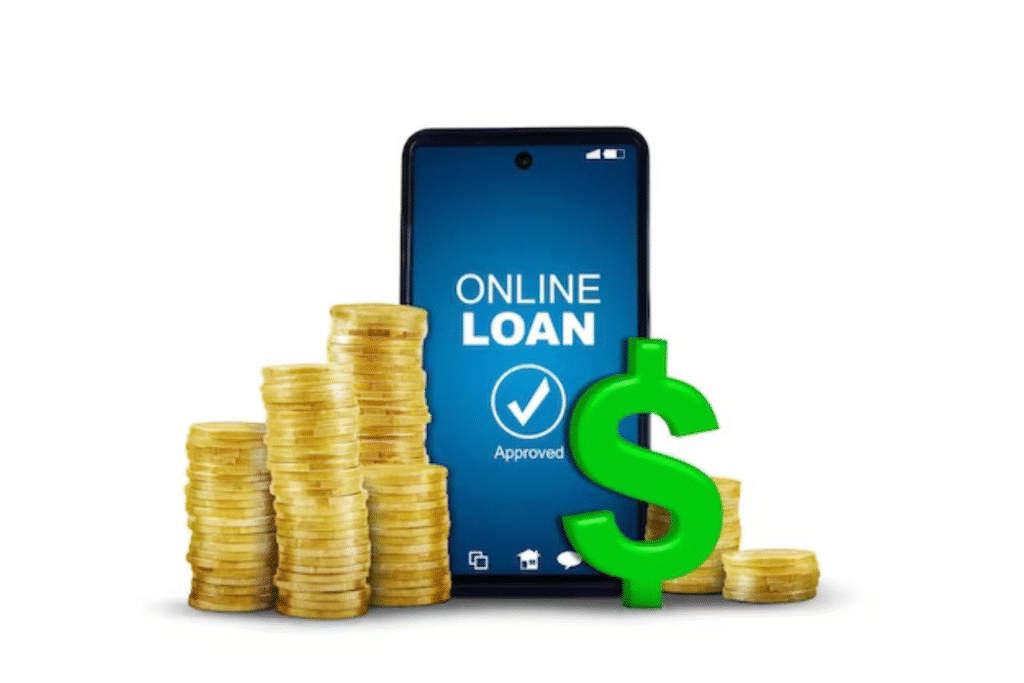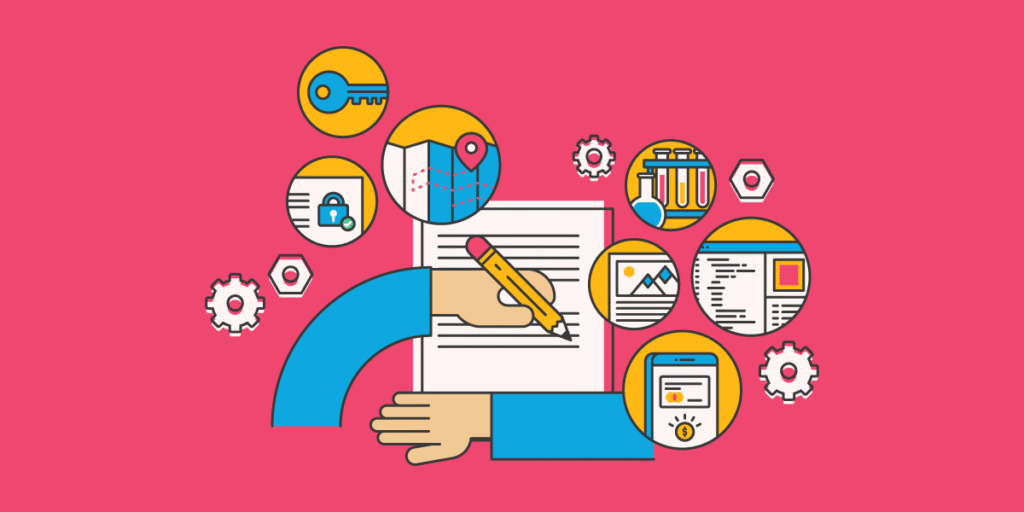In today’s digital age, getting a loan has never been easier. Gone are the days when you had to visit a bank branch, wait in long queues, and fill out heaps of paperwork. With just a few clicks, you can apply for and receive a loan online—often within hours. However, while online lending is convenient and fast, it also comes with its own set of challenges and risks.
This guide walks you through everything you need to know to get a loan online—quickly, securely, and confidently.
What Is an Online Loan?

An online loan is a financial product offered over the internet. Unlike traditional loans from brick-and-mortar banks, online loans are applied for, approved, and disbursed through digital platforms, usually without in-person interactions.
Types of Online Loans
- Personal Loans: Unsecured and versatile loans used for various purposes like debt consolidation or emergency expenses.
- Payday Loans: Short-term, high-interest loans typically repaid on your next payday.
- Auto Loans: Loans for purchasing a vehicle, sometimes available through online lenders or dealerships.
- Student Loans: Online options from private lenders for education funding.
- Business Loans: Tailored for entrepreneurs, including short-term funding or merchant cash advances.
Why Choose an Online Loan?
Speed and Convenience
One of the biggest advantages is speed. Applications can be completed in minutes, and some lenders offer same-day or next-day funding.
Flexible Qualification Criteria
Online lenders often cater to a broader range of credit profiles, making them accessible to those with fair or even poor credit.
Transparent Comparison
You can compare rates, terms, and reviews across dozens of lenders online, helping you find the best deal with minimal effort.
24/7 Access
Online loans don’t require you to follow business hours. You can apply at your convenience from home, work, or on the go.
How to Apply for a Loan Online
Step 1: Determine Your Loan Needs
Before applying, ask yourself:
- How much money do you need?
- What will you use the loan for?
- What monthly payment can you afford?
Having clear answers will help you choose the right loan type and term.
Step 2: Check Your Credit Score
Most lenders assess your credit score to determine your eligibility and interest rate. You can check your score through various free services or your bank.
Step 3: Research and Compare Lenders
Look for lenders that:
- Are reputable and licensed
- Offer competitive interest rates and fees
- Have flexible repayment options
- Provide positive customer experiences
Step 4: Gather Required Documentation

Although documentation requirements vary, you’ll typically need:
- Government-issued ID
- Proof of income (pay stubs or tax returns)
- Bank account information
- Social Security number
Step 5: Complete the Online Application
You’ll be asked to provide personal and financial details. Most platforms offer real-time decisions or respond within a few business hours.
Step 6: Review and Accept the Offer
If approved, the lender will send a loan offer outlining the amount, interest rate, repayment terms, and any fees. Review carefully before accepting.
Step 7: Receive Your Funds
Once accepted, funds are usually deposited directly into your bank account—often within 24 hours.
Safety Tips for Online Borrowing
Use Reputable Lenders Only
Stick to well-reviewed, licensed lenders. Look for accreditation from the Better Business Bureau (BBB) or regulatory bodies like the Consumer Financial Protection Bureau (CFPB).
Avoid Upfront Fees
Legitimate lenders do not require payment before disbursing your loan. Avoid any offer that asks for money upfront.
Check for Secure Websites
Only enter your personal details on sites with “https://” in the URL and a visible padlock icon.
Read the Fine Print
Always read the loan agreement carefully. Look for:
- APR (not just the interest rate)
- Origination or service fees
- Prepayment penalties
- Automatic withdrawal clauses
Protect Your Information
Use strong passwords, enable two-factor authentication, and avoid accessing financial websites from public Wi-Fi.
Pros and Cons of Getting a Loan Online
Pros
- Speed: Approval and funding can happen within hours.
- Convenience: No paperwork or office visits needed.
- Choice: Wide range of lenders and products to choose from.
- Accessibility: Suitable for a range of credit profiles.
Cons
- Scams: Online fraud is a risk—especially from unknown lenders.
- Higher Rates for Poor Credit: Subprime borrowers may face steep rates.
- Data Security Concerns: Personal info is transmitted online.
- Limited Customer Service: Some online-only lenders lack phone support.
Red Flags to Watch Out For
Unrealistically Low Rates
If the offer seems too good to be true, it probably is. Research the lender thoroughly.
Pressure to Act Fast
Scammers often pressure you to “act now.” Legitimate lenders give you time to review the loan terms.
Lack of Physical Address or Contact Info
Every reputable lender will have a physical office and multiple contact methods.
Requests for Unusual Payment Methods
Avoid lenders who ask for prepaid cards, wire transfers, or cryptocurrency.
Best Practices for Managing Your Online Loan
Set Up Auto-Pay
Many lenders offer discounts for setting up auto-pay. It also helps you avoid late fees.
Track Your Repayments
Use budgeting apps or spreadsheets to monitor your repayment schedule.
Communicate with Your Lender
If you anticipate missing a payment, contact the lender in advance to discuss options like forbearance or modified payments.
Refinance if Needed
If your credit improves, you may be eligible for better terms. Consider refinancing for a lower rate or longer term.
Also Read : Mastering The Loan Application Process: Step-by-step Guide To Getting Approved
Conclusion
Online loans offer a fast, convenient way to get financial help, whether for emergencies, debt consolidation, or large purchases. But speed shouldn’t replace caution. By understanding how online loans work, comparing lenders carefully, and practicing good digital hygiene, you can borrow smartly and safely.
While the online world provides unmatched ease and flexibility, the best defense is knowledge. Arm yourself with the right information, use only trusted platforms, and make sure any loan you take out fits well within your budget and financial goals.
Frequently Asked Questions (FAQs)
Are online loans safe?
Yes—if you use a reputable and licensed lender. Always research the lender, check for encryption, and avoid giving out personal information to unknown sites.
Can I get an online loan with bad credit?
Many online lenders work with people who have fair or even poor credit. However, interest rates may be higher.
How long does it take to get a loan online?
Some online loans are approved and funded on the same day. Most are processed within 1–3 business days.
What is the difference between a payday loan and a personal loan?
Payday loans are short-term, high-interest loans typically due on your next payday. Personal loans have longer terms and usually lower rates, making them more suitable for larger expenses.
Will applying for an online loan hurt my credit score?
Most lenders do a soft credit check for pre-qualification, which doesn’t affect your score. A hard inquiry during final approval may lower your score slightly.


